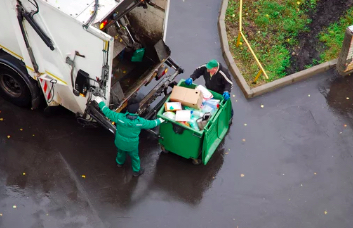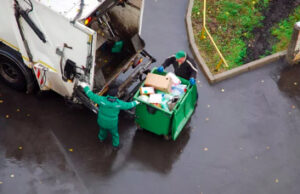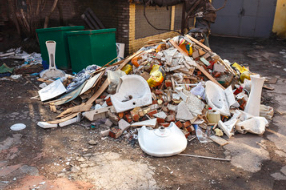
The waste management process is a crucial part of an organization’s sustainability strategy. It prevents greenhouse gas emissions and helps reduce costs. It also saves natural resources such as trees and metals.
It can be achieved through waste reduction and recycling. This includes reusing old materials like jars and bags. Other methods include anaerobic digestion and plasma gasification, which converts non-recyclable waste into heat, electricity, and fuel. Visit Website to learn more.
Recycling is the process of converting used materials into new, reusable products. It is an important part of waste management and is a good alternative to landfills or incineration. It also conserves natural resources and helps reduce energy consumption, thereby decreasing greenhouse gas emissions. In addition, recycled materials are more durable than those made from raw materials. Recycling also provides a source of valuable materials for the manufacturing industry. It is vital to understand what types of materials are recyclable so that you can properly sort your waste.
Communities and businesses often make it easy for people to recycle by placing labeled bins on the curb or providing home and business owners with curbside recycling collection services. Once the waste is collected, it is taken to a recovery facility, where it is sorted and processed into usable materials. The recovered materials can be used in a variety of products, such as glass, paper, and metal.
The energy savings from recycling are significant. For instance, producing a single aluminum can from recycled material saves 95% of the energy needed to produce new aluminium from raw materials. The same is true for steel and tin. These energy savings add up over time and can help reduce the global carbon footprint.
Another benefit of recycling is that it diverts waste away from landfills and incinerators, which reduces pollution and land degradation. In addition, it saves money for households, businesses, and local public services. In fact, it is 6 times cheaper to dispose of recycled waste than general waste.
Avoiding and reducing waste is crucial to sustainable development. The most effective way to do this is to adopt the 3 Rs of sustainability: Reduce, Reuse, and Recycle. Moreover, it is essential to educate people about the benefits of sustainable living. Changing the culture of our society is one of the most challenging tasks, but it can have a profound impact on our environment.
Some waste is unavoidable, but there are many ways to limit it. One of the most important things you can do is to avoid generating waste in the first place by using fewer materials and avoiding disposable items. You can also minimize waste by purchasing reusable containers, water bottles, and shopping bags.
Incineration
Incineration, or thermal treatment, is a waste disposal process that converts solid organic waste into ash residue and gases. It is a common option for disposing of municipal solid waste and the resulting solid residue from wastewater treatment. However, it is not without some environmental concerns. The main disadvantage of incineration is the release of pollutants into the air that can affect human health. These pollutants can include particulate matter, dioxins, and heavy metals. Some of these are released into the air directly and may cause respiratory problems, while others can be absorbed through the food chain, which can affect human and animal health.
In order to reduce the emission of pollutants, waste incineration facilities use a variety of methods to reduce emissions during combustion. These methods involve controlling the composition of the waste feed, modifying combustion processes, and using air pollution control devices. The most important factor in determining emission rates is the design and operation of the combustion chamber(s). This is true for all types of waste incineration, including municipal solid waste, hazardous waste, and medical waste.
Emissions from incineration processes include dioxins and furans, heavy metals (including mercury, cadmium, and lead), acid gases, and particulate matter. These contaminants are either present in the waste feed, formed during incomplete combustion reactions, or created through reformation reactions in the gas cooling or APCD system.
The emissions from incinerator operations vary considerably over short and long time periods. This is due to variations in operating conditions, which include startup and shutdown periods and disturbances to the normal operating condition.
The most significant emissions from incineration processes are those of particulate matter, dioxins and furans, and heavy metals. These are primarily from the incineration process itself, although some of them are also a result of fugitive emissions and/or from scrubbing systems. Particulate matter is generally controlled through a combination of electrostatic precipitators and fabric filters. Other pollutants are mainly controlled through water-based scrubbing systems, such as wet scrubbers and spray dryer absorbers. Nitrogen oxides can be controlled with ammonia injection, or through selective catalytic reduction.
Waste minimization or source reduction
There are a number of waste management processes that can be used to reduce the quantity and toxicity of solid wastes. This is referred to as waste minimization or source reduction. It involves the design, manufacturing or purchase of materials and products that produce less waste or have lower toxicity than similar products. It is a highly effective method of waste disposal that can save money, conserve natural resources and extend landfill space.
Some examples of this process include purchasing products in bulk, such as cereal or potato chips, using reusable trays for serving food and choosing paper plates and napkins made of recycled materials. It also entails avoiding unnecessary product packaging and using re-usable cleaning supplies instead of disposable ones. It is a key component of any company’s sustainability program.
The first step in waste minimization is establishing a capable waste management team. This should consist of a supervisor and two or more employees with the capability to handle the responsibilities of the new waste management process. This will ensure that this critical business function isn’t overlooked or neglected. It will also promote accountability and create a sense of ownership for the team members involved in this important task.
Another important step is educating employees on the importance of waste minimization and recycling. This can be done by incorporating it into a company-wide policy or implementing training sessions. Employees will be more engaged if they know the new policies are important to the overall success of the company.
A third way to reduce waste is through resource recovery. This is a more complicated process and involves turning trash into useful materials. It can be performed by processing the material to recover a usable product or by converting it into energy. For example, a company that has a large amount of aluminum scrap can extract copper from the scrap. This can then be sold to copper fabricators. This is a form of resource recovery that can generate a significant revenue stream for a company.
Another way to reduce waste is through production site design and construction. This can be done by ensuring that the production site is sized appropriately to avoid excess material purchases. It can also be done by incorporating features in the facility’s design, such as drip pans, elevated flowlines and stock tank vapor recovery systems, that can help minimize waste generation.
Mechanical biological treatment
Mechanical biological treatment is a process that combines a waste processing plant with a form of biological treatment such as composting or anaerobic digestion. This is a relatively new waste management technique that has not yet found acceptance in North America, though some systems and facilities have been tested.
The MBT process separates recyclable material from organic waste and recovers high calorific value refuse-derived fuel (RDF) from municipal solid waste (MSW). It can also be used to produce biogas for energy generation and soil improver from the compostable fraction of MSW. The MBT process can be a useful alternative to landfilling and incineration as it can save energy and reduce emissions. However, it requires significant capital investment and a dedicated plant to operate.
The mechanical part of an MBT process involves shredding, size and shape screening, trommel separation, and positive selection technology such as near infrared sorting. These technologies separate the fine fraction of the waste that is suitable for biological treatment from the coarse fraction that contains more valuable recyclable materials. These materials are then sent to the biological process, which can be a variety of different types, including open windrow composting and in-vessel digestion.
Biological processing involves the use of microorganisms to break down organic matter, which is then turned into soil improver or biogas for power generation. In MBT plants, the mechanical and biological processes can be arranged in any order and can be conducted in parallel or sequentially. The MBT process is also known as BMT – biological mechanical treatment.
Landfilling organic waste produces methane, contributes to leachate generation and has the biggest negative environmental footprint of any MSW fraction. However, the MBT process can help reduce the amount of food waste that ends up in landfills by separating out the more easily degradable components. The MBT process can also be a good choice for developing countries that have limited budgets for waste management. In addition, the MBT process can be a good complement to source separation logistics in developing countries. In addition, MBT can increase the efficiency of recycling and incineration by increasing the quality of recycled materials.


 In a world where minimalism and Marie Kondo’s “spark joy” philosophy are gaining popularity, the art of efficient rubbish removal has never been more relevant. A cluttered space can profoundly impact your mental and physical well-being, making it essential to declutter efficiently. In this blog post, we’ll explore the importance of decluttering and provide a step-by-step guide to remove rubbish from your space effectively. For more information, check out this website at
In a world where minimalism and Marie Kondo’s “spark joy” philosophy are gaining popularity, the art of efficient rubbish removal has never been more relevant. A cluttered space can profoundly impact your mental and physical well-being, making it essential to declutter efficiently. In this blog post, we’ll explore the importance of decluttering and provide a step-by-step guide to remove rubbish from your space effectively. For more information, check out this website at 